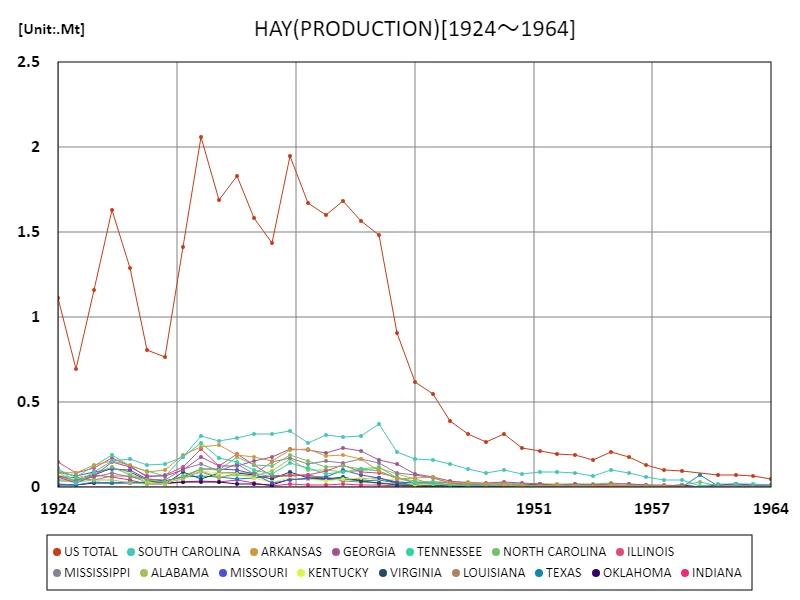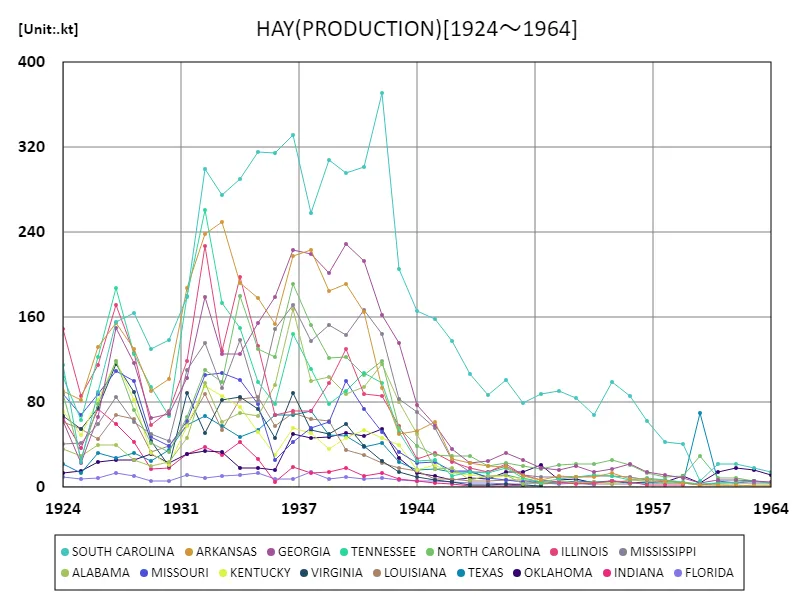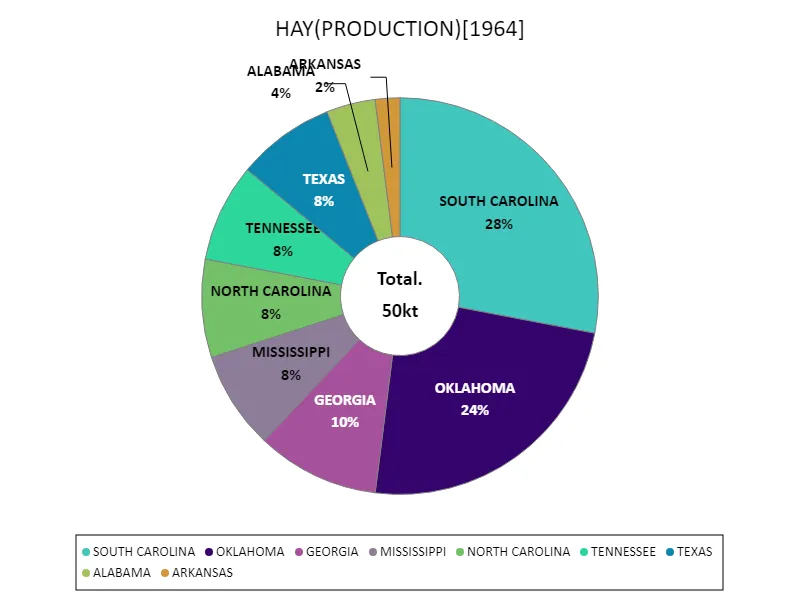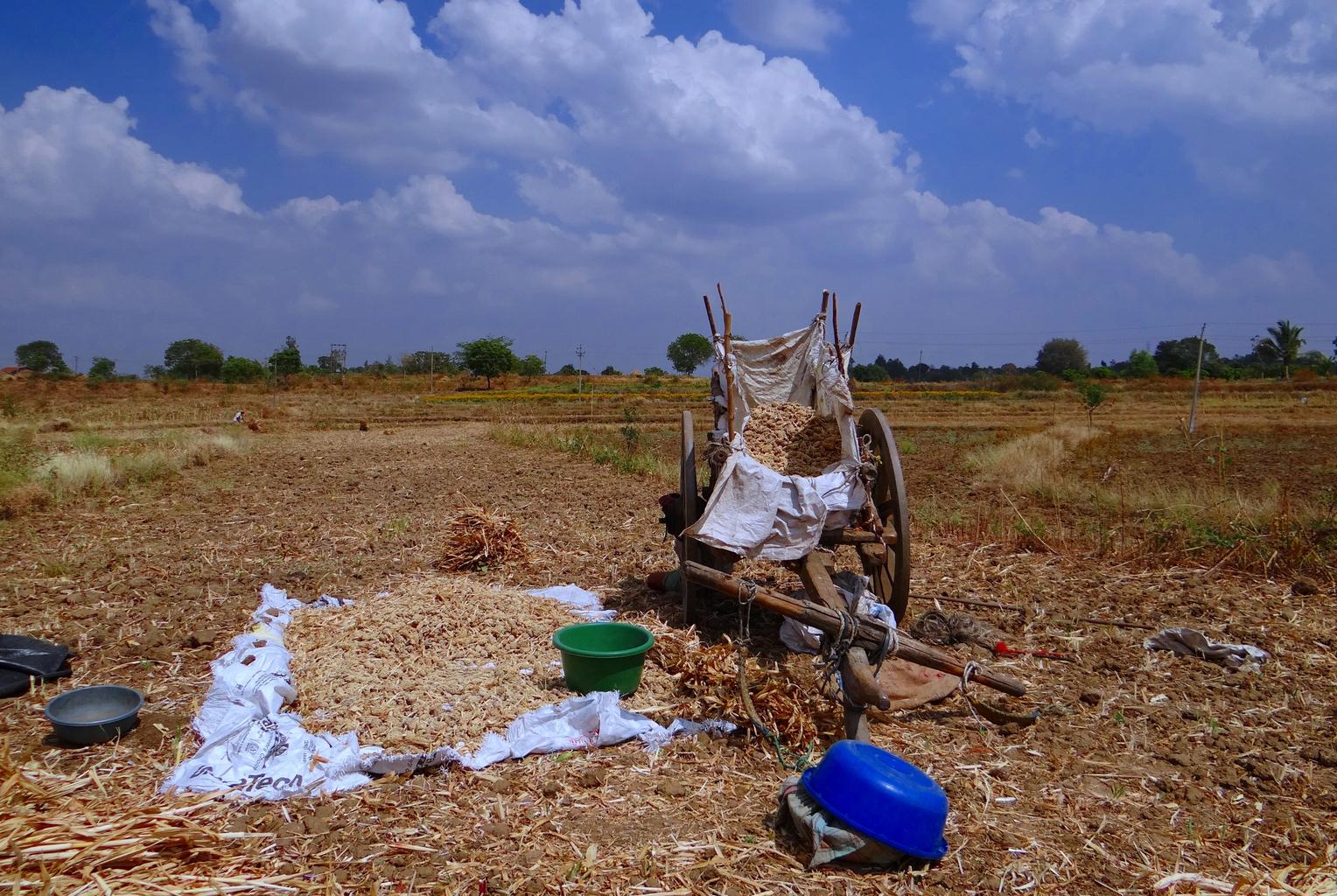Abstract
Sorghum crop production in the United States has shown a stable trend in recent years. In 2023, a record harvest was recorded, totalling approximately 4.98 megatonnes. Sorghum is primarily used for livestock feed and food processing, and is valued for its excellent drought tolerance, especially in arid regions. It is also considered important as a raw material for bioenergy production, and there are high expectations for its use as a sustainable energy source. For farmers, sorghum plays an important role as a way to stabilize income while maintaining crop diversity. Although climate change will have an impact in the future, technological innovation and the expansion of cultivated areas are expected to lead to further increases in production.
Annual yield of sorghum
Sorghum crop production in the United States has undergone change over the past few decades. Production peaked at 16.6 megatons in 1957 and has been declining since then. This decline is due to multiple factors, primarily driven by technological innovations in agriculture and changes in the market. Sorghum has high drought tolerance in arid regions and is considered important as a raw material for livestock feed, food processing, and bioenergy. However, in recent years, the diversity of grains has expanded and competition has intensified. We also need to take into account the effects of climate change. Recent data suggests the US total for 2023 will be 4.98 megatons, down 30.1% from the peak. Going forward, the promotion of sustainable agriculture and the development of new market demand will be key factors in sorghum production.


The maximum is 2.06Mt[1932] of US TOTAL, and the current value is about 2.43%
Annual sorghum yield (50 US states)
Kansas’s position in U.S. sorghum production is particularly notable for its record harvest of 6.93 megatons at its peak in 1957, but production has declined in subsequent decades. Kansas has a dry climate and vast farmland, making it ideal for growing sorghum. This grain was valued as livestock feed and an energy source, and at one time played an important role in the agricultural economy. Recent data shows Kansas sorghum production in 2023 will be down to 15.6 percent of its peak. The decline is due to technological innovations in agriculture making other grains more competitive and changes in market demand. There is a lot of competition, especially from other crops such as corn, and producers need to respond. Looking to the future, the challenge will be to promote sustainable agricultural practices and adapt to the effects of climate change. Kansas will need to implement effective agricultural policies and technologies to remain a key sorghum growing state. Additionally, exploring new market opportunities and developing diverse utilization methods could contribute to stabilizing and growing production.


The maximum is 371kt[1942] of SOUTH CAROLINA, and the current value is about 3.77%
Annual sorghum yield (50 US states, latest year)
Sorghum crop production in the United States exhibits different characteristics depending on the region. According to 2023 data, the overall largest was Texas at 2.41 megatons, a large share of total U.S. sorghum production. The average state production is about 830 kilotons, which puts Texas ahead of other states such as California and Kansas. Sorghum has high drought tolerance in arid regions and is highly valued as livestock feed and an energy source, but competition from other grains is fierce and producers must adapt to changes in the market. The grain is grown in southern regions, particularly Texas, and plays an important role in the local economy. Looking to the future, challenges include addressing the effects of climate change and promoting sustainable agricultural practices. Growers in the Southern region, including Texas, are urged to continue their efforts to improve productivity through the adoption of new technologies and management practices. In addition, the development of diverse ways to use sorghum and the discovery of new markets could also contribute to stabilizing and growing production.


The maximum is 14kt of SOUTH CAROLINA, the average is 5.56kt, and the total is 50kt



Comments